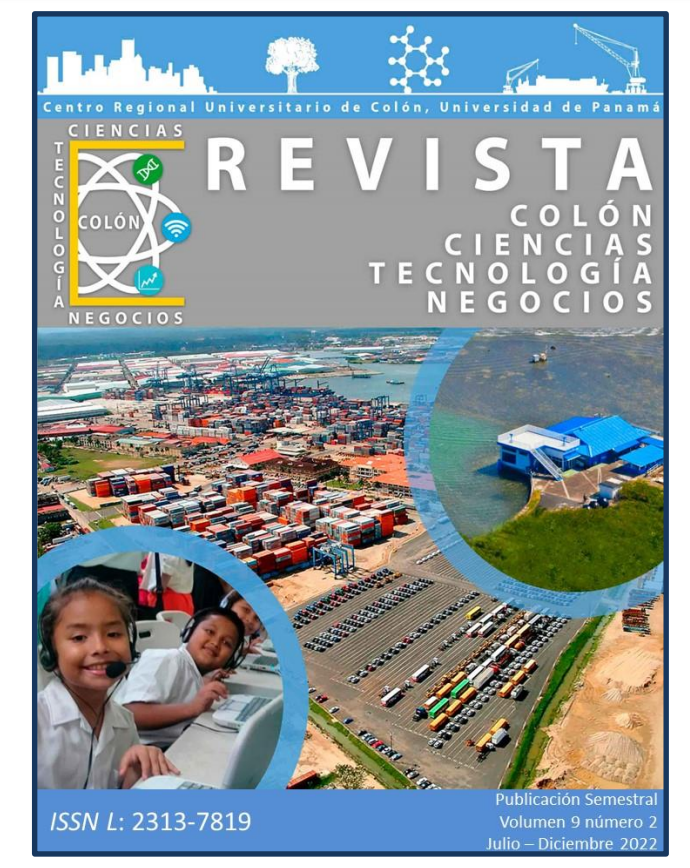References
Álvarez, M. L. (2019). Tratamiento de suelos contaminados por metales mediante combinación de técnicas de fitorremediación con adición de biochar. [Tesis Doctoral, Universidad Politécnica de Madrid, España]. https://doi.org/10.20868/UPM.thesis.55865
Argomeda, G., y Alfredo, M. G. (2017). Remoción de cadmio y plomo en suelos a orillas del Río Mantaro, Junín, mediante fitorremediación con girasol (Helianthus Annus) y maíz (Zea Mays) usando enmiendas. [Tesis de Grado, Universidad César Vallejo, Perú].
Bautista, F. (1999). Introducción al estudio de la contaminación del suelo por metales pesados. 1 ed. México. Ediciones de la Universidad de Yucatán.
Canales, D. (2021). Revisión sistemática de diferentes métodos de fitorremediación en suelos contaminados con metales pesados. [Tesis de Grado, Universidad César Vallejo, Perú].
Chen, Y., Jiang, X., Wang, Y., y Zhuang, D. (2018). Spatial characteristics of heavy metal pollution and the potential ecological risk of a typical mining area: A case study in China. Process Safety and Environmental Protection, 113, 204–219. https://doi.org/10.1016/j.psep.2017.10.008
Coyago, E. y Bonilla, S. (2019). Cinética de absorción de plomo en especies vegetativas previo a procesos de fitorremediación de suelos altamente contaminados. Revista Alfa, 3(7), 47-58. https://doi.org/10.33996/revistaalfa.v3i7.54
Delgadillo, A. E., González, C. A., Prieto, F., Villagómez, J. R., & Acevedo, O. (2011). Phytoremediation: An alternative to eliminate pollution. Tropical and Subtropical Agroecosystems, 14(2), 597–612. https://www.revista.ccba.uady.mx/ojs/index.php/TSA/article/view/814/565
Ferrua, S.V. y Aimituma, K.M. (2019). Potencial fitorremediador de especie Amaranthus caudatus como alternativa para suelo contaminado con plomo y cromo. [Tesis de Grado, Universidad Peruana Unión, Perú]. http://hdl.handle.net/20.500.12840/2437
Galeano, J. (2016). Diseño de la planta de tratamiento de aguas residuales. en diseño de la planta de tratamiento de aguas residuales, 158-168.
Gama Retamozo, Y. O. (2019). La fitorremediación como alternativa en la recuperación de suelos afectados con desmontes de construcción – Cajabamba. [Tesis de Maestría, Universidad Nacional de Cajamarca, Perú]. http://hdl.handle.net/20.500.14074/3489
Grandez, M. G. A. (2017). Remoción de cadmio y plomo en suelos a orillas del río Mantaro, Junín, mediante fitorremediación con girasol (Helianthus annus) y maíz (Zea mays) usando enmiendas. [Tesis de Grado, Universidad César Vallejos, Perú]. https://hdl.handle.net/20.500.12692/3537
Huiracocha, J. F. (2018). Evaluación del riesgo por cadmio y plomo en granos de arroz (Oryza sativa) comercializados en la ciudad de Cuenca. [Tesis de Maestría, Universidad de Cuenca, Ecuador]. http://dspace.ucuenca.edu.ec/handle/123456789/31265
Hudson, N. (2006). Conservación del suelo. Edit. Reverté, S.A. España. p 44.
Jiménez, R. (2017). Introducción a la contaminación de suelo. Mundi-Prensa. España. p 2-29.
Lizcano, J. A. (2020). Análisis teórico de las técnicas mixtas de nano-biorremediación en la recuperación de suelos contaminados con metales pesados. [Tesis de Grado, Universidad Nacional Abierta y a Distancia, Colombia]. https://repository.unad.edu.co/handle/10596/38436
Liu, L., Li, W., Song, W., y Guo, M. (2018). Remediation techniques for heavy metal-contaminated soils: principles and applicability. Science of the total environment, 633, 206-219. https://doi.org/10.1016/j.scitotenv.2018.03.161
Kumar, N., Kulsoom, M., Shukla, V., Kumar, D., Priyanka, Kumar, S., Tiwari, J. y Dwivedi, N. (2018). Profiling of heavy metal and pesticide residues in medicinal plants. Environmental Science and Pollution Research, 25, 29505-29510. https://doi.org/10.1007/s11356-018-2993-z
Kumari, B., y Singh, D. P. (2016). A review on multifaceted application of nanoparticles in the field of bioremediation of petroleum hydrocarbons. Ecological Engineering, 97, 98–105. https://doi.org/10.1016/j.ecoleng.2016.08.006
Méndez, A., Amachi, F., Vera, M., y Espinosa, I. (2016). Fitorremediación al plomo asimilable, una biotecnología promisoria. Revista Ciencia y Tecnología, 2(4), 5. https://revistas.ujcm.edu.pe/index.php/rctd/article/view/58
Mitton, F.M, Miglioranza, K.S.B., González, M., Shimabukuro, V.M. & Monserrat, J.M. (2014). Assessment of tolerance and efficiency of crop species in the phytoremediation of DDT polluted soils. Ecological Engineering, 71, 501–508. http://dx.doi.org/10.1016/j.ecoleng.2014.07.069
Munive, R., Figueroa, O., Azabache A. y Gamarra, G. (2018). Fitorremediación con Maíz (Zea mays L.) y compost de Stevia en suelos degradados por contaminación con metales pesados. Scientia Agropecuaria, 9(4), 551-560. https://doi.org/10.17268/sci.agropecu.2018.04.11
Núñez, R., Vong, Y. M., Ortega, R. y Olguín, E. (2017). Fitorremediación: fundamentos y aplicaciones, Biotecnología y Biología Molecular. Ciencia, Julio-Septiembre, 69-82.
Paredes Campos, P. y Rodríguez Rojas, J. (2020). Revisión sistemática: Especies vegetales en la fitorremediación de suelos contaminados por metales pesados. [Tesis de Grado, Universidad César Vallejos, Perú]. https://hdl.handle.net/20.500.12692/64119
Peña, I. (2019). Evaluación de la capacidad de absorción del Helianthus annuus como agente fitorremediador de suelos contaminados con plomo. [Tesis de Grado, Universidad Nacional Tecnológica De Lima Sur, Perú]. http://repositorio.untels.edu.pe/jspui/handle/123456789/167
Ramos, D; Terry, E; Soto, F. y Cabrera, J. (2016). Técnicas de remediación de suelo. Revista Ciencia, 35(2).
Suárez, R. (2021). Fitorremediación: una alternativa para reducir la contaminación por hidrocarburos en Ecuador. [Tesis de Grado, Universidad Estatal Península de Santa Elena, Ecuador]. https://repositorio.upse.edu.ec/handle/46000/6301
Tabagari, I., Kurashvili, M., Varazi, T., Adamia, G., Gigolashvili, G., Pruidze, M., Chokheli, L., Khatisashvili, G. & Niemsdorff, P von F. (2019). Application of Arthrospira (Spirulina) platensis against chemical pollution of water. Water, 11(9), 1759. https://doi.org/10.3390/w11091759
Tariq, S. R. & Ashraf, A. (2016). Comparative evaluation of phytoremediation of metal contaminated soil of firing range by four different plant species. Arabian Journal of Chemistry, 9(6), 806–814. https://doi.org/10.1016/j.arabjc.2013.09.024
Vargas, C. M., Oviedo, A., Montañez, M. N., y Polania, A. (2018). Estado del arte; del uso de la eichhornia crassipes en la fitorremediación de aguas residuales industriales. Ingenio Magno, 9(2), 105–130. http://revistas.ustatunja.edu.co/index.php/ingeniomagno/article/view/1631
Vargas, L. J. (2021). Fitorremediación de suelos contaminados con plomo en zonas mineras de Perú. [Tesis de Grado, Universidad Científica del Sur, Perú]. https://hdl.handle.net/20.500.12805/1890
Velásquez, J. A. (2017). Contaminación de suelos y aguas por hidrocarburos en Colombia. Análisis de la fitorremediación como estrategia biotecnológica de recuperación. Revista de Investigación Agraria y Ambiental, 8(1), 151–167. https://doi.org/10.22490/21456453.1846
Zhou, L., Li, Z., Liu, W., Liu, S., Zhang, L., Zhong, L., Luo, X., & Liang, H. (2015). Restoration of rare earth mine areas: organic amendments and phytoremediation. Environmental Science and Pollution Research International, 22(21), 17151–17160. https://doi.org/10.1007/s11356-015-4875-y

